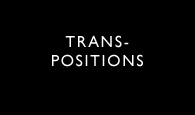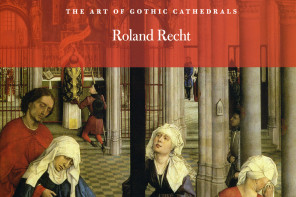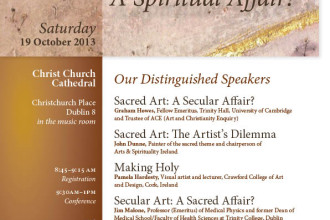Roger Scruton. The Soul of the World. Princeton: Princeton University Press, 2014, viii + 205 pp., $27.95 cloth.
In this, the forty-first text of non-fiction published by Roger Scruton, the central aim is no less than the salvation of the world. Scruton writes to defend the reality of the sacred over and against popular forms of atheism like materialism and naturalism. This book affirms the reality of a transcendent dimension of the world that the lens of natural science cannot see.
Scruton believes much is at stake. Indeed, he conceives himself as writing to save the anima mundi, the soul of the world. For, if we do not acknowledge the reality of sacred things, we stand to suffer the loss of meaning, of music, of beauty and even the loss of our very selves. Put simply, he writes to persuade the reader that we stand to suffer the loss of the world.
To evaluate the success of Scruton’s attempt, I’ll rehearse the strengths and weaknesses of the text.
The most compelling aspect of Scruton’s argument is that the loss of the sacred means the loss of the world centered on the limitations of science as observed in the idea of the person and through the development of cognitive dualism.
Combating the view that the human person is “nothing but” the human animal, Scruton critiques the impoverished view of personhood in the reductivist’s worldview. The defining character of personhood is not consciousness, but self-consciousness – the first-person case. The self-awareness inherent in the use of the first-person pronoun “I” carries with it an epistemological privilege of first-person knowledge. Epistemological privilege is my ability to report a state of affairs “about which I cannot, in the normal case, be mistaken, and concerning which I do not have to find out whether they obtain” such as “I am happy” or “I want to live in Paris” [32].
The existence of the person introduces subjects into a world of objects. Science observes the world of objects and so the scientific enterprise cannot account for the first-person case. This, he argues, is true for two reasons. First, persons are the product of encounters between subjects in the web of reasons, intentions and inter-responsibility. This “I-You” encounter transcends the processes of cause-and-effect between objects and so is beyond the register of scientific explanation [66-67]. Given the existence of the subject, the person, “a new order of understanding, in which reasons and meanings, rather than causes, are sought in answer to the question ‘why?’” [67]. Second, to reduce the explanation of personhood to neuroscience is to eliminate the epistemological privilege of first-person knowledge. If neuroscience offered the full account, the only way to verify that I am in a certain state would be a brain scan: “if the true theory of the mind is a theory of what goes on in the neural pathways, I would have to find out about my own mental states as I find about yours…my best observations would be of the form ‘it seems as though such-and-such is going on…’” [65].
Scruton further demarcates the limits of science’s explanatory power by developing the concept of cognitive dualism. This is the idea that there is but one reality that may be understood in more than one way [67]. Scruton explains this via a convergence of incommensurable concepts borrowed from Husserl: welt and Lebenswelt. Welt refers to the natural world: the wavelengths of refracted light. Lebenswelt refers to the world of life, the world in which human persons live, perceive and experience the fullness of reality: the hue of cerulean blue.
Both welt and Lebenswelt refer to the same “stuff” but in distinct ways: “the acoustician and the musical listener apprehend what they hear in two different ways. Each way is cognitively complete – that is to say, it apprehends and orders everything that is there. And the two ways are incommensurable, in the sense that a partial apprehension under one of them cannot be completed by a partial apprehension under the other” [38]. Science deals only in the welt, the world of physics and chemistry. The Lebenswelt, the world of music and color, emerges from and transcends.
Science and the world of nature measure just a detection of a melody emerging from a series of pitched sounds. Without the Lebenswelt, there is merely a scientific explanation of phenomena– this means the loss of “aboutness”. Scruton illustrates this by considering Beethoven’s Third Piano Concerto. Whereas the ear of science hears “…a series of pitched sounds, one after the other, each identified by frequency…we hear a melody…In describing the music, you are not describing sounds heard in a sequence; you are describing a kind of action in musical space” [37]. The world according to reductionist philosophers is one that “…contains sounds, but no melodies, just as it contains brains, but no people” [167].
Despite these strengths, there are at least two noteworthy weaknesses: the first related to style and the second to substance. As for style, it is sometimes difficult to follow Scruton’s line of argumentation because he often explores distracting, though sometimes intereseting, rabbit trails. One example is his survey of legal theory surrounding human rights [81-87]. His intention is to demonstrate that the concept of a right is grounded in the metaphysics of the self he is articulating. Though interesting, it distracts from his central argument.
My critique of substance is related to this first critique. On the one hand, he attempts to say too much about too many things. His breadth of topics is so expansive, it’s difficult to satisfactorily develop his argument. He does, however, confesses that his discussion veered into territory seemingly far away from his main theme [175]. Despite his attempts to explain why the text lingers so long in other realms like settling, building and music, I don’t think his forays are ultimately justified (however interesting they may be). On the other hand, he says too little about too many things. He makes many strong assertions without satisfactorily substantiating his claims. This ranges from his opinion about disco dancing [151] to his hermeneutic for understanding Genesis 1-3 [105-109]. Again, he acknowledges that his approach will be more casual than scholarly, but I think his argument would be more persuasive if he attempted more with less.
Despite these weaknesses, Scruton makes a strong case that much is at stake in the battle to defend the reality of the sacred. And so, even if Scruton fails to deliver a deathblow to popular forms of atheism (and so, by himself, save the world), this text serves, at the very least, to sound the alarm that the world is under attack.





